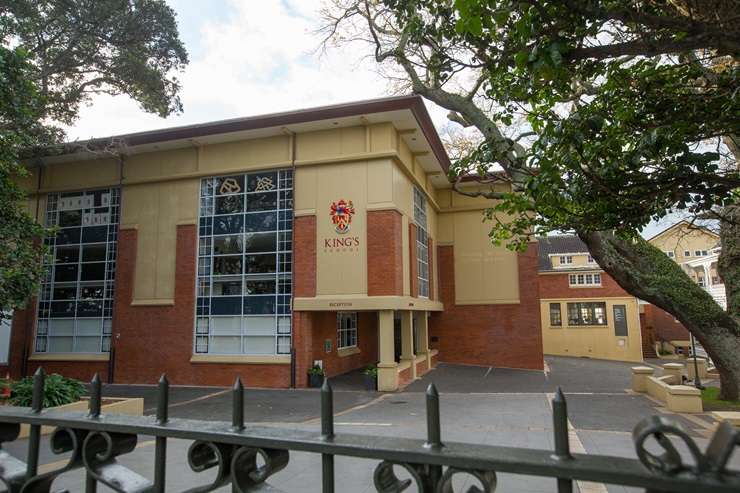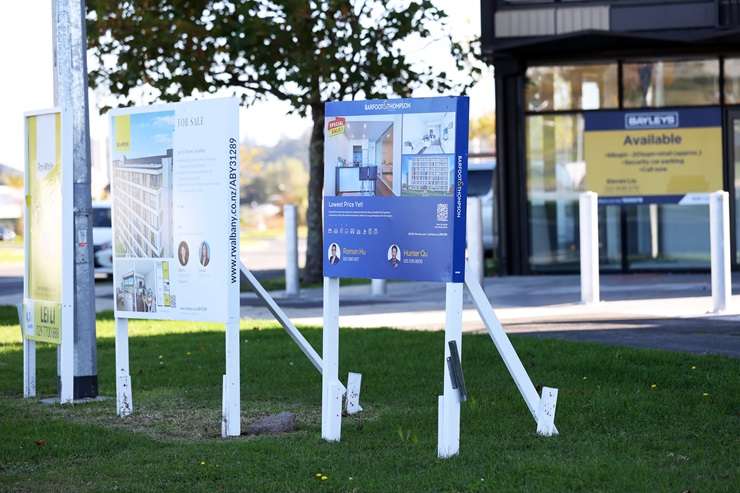“Unhealthy debt”, private school fees and car loans are torpedoing the property dreams of well-off, middle-class Kiwis, mortgage brokers have told OneRoof.
Homeowners looking to move up the property ladder, particularly those hoping to land a place in the $2m to $4m price range, have been thrown by the extra scrutiny on their finances as a result of the CCCFA.
Many on good salaries have found they can’t borrow as much money as they thought they might. Some had assumed the tougher lending rules enacted at the end of 2021 applied to first-home buyers only and are surprised when bank managers go though their statements line by line.
Andrew Chambers, chief executive of online mortgage brokers Tella, said the changes should be a wake-up call for borrowers.
Start your property search
“Part of the problem is unhealthy credit,” he told OneRoof.
“People have been buying up [since Covid] and putting it on the credit card. You’ve got a problem with middle-income families. They’ve got the income, but they’ve got two car loans, a [credit] card that’s got bigger and bigger, the trip overseas, it’s really clocked up.
Discover more:
- Tony Alexander: When homeowners should expect the magic 1% cut in mortgage rates
- Owner could take $800,000 hit on mansion that escaped mortgagee sale
- ‘It’s gut-wrenching’: Returning expats build ‘forever’ home only to quit NZ five years later
“They can’t afford to upgrade their loans. It’s put their family under a bit of vulnerability.”
He said many homeowners fail to realise that the amount they can add to their mortgage is largely driven by their overall debt position, noting that even a small credit card debt might reduce the amount they can borrow by much as $100,000.
And while banks can gloss over debts or expenses that can be sorted out quickly – such as closing an unused credit card or paying off the buy now pay later account – they are tougher on other commitments, particularly things like car loans, which may have years still to run.
Even private school fees can cut borrowing ability.
“A rule of thumb is that banks will lend 4.5 to 5 times your income. So if you have $40,000 of private school costs, that equates to $180,000 of lost home loan,” he said.

King's School, a private preparatory in Auckland's Remuera. Kiwis hoping to make the next step up the property ladder may be held back by private school fees. Photo / Jason Dorday
Chambers said his brokers have had well-off clients whose borrowing power has been reduced to $200,000 because of debts. “On their income, they could have borrowed $800,000. That’s the difference between owning a home and not,” he said.
“For some clients, their level of debt was their entire yearly gross income.”
John Bolton, founder of Squirrel mortgage brokers, said that it’s not uncommon for borrowers to have monthly household expenses of $10,000. “That’s not rates or insurance, that’s clothes, groceries, eating out. Banks go through those expenses, even if you have a high discretionary income,” he said.
The new rules are proving particularly hard for movers, many of whom haven’t applied for a mortgage in years. “The thing for a mover is that if it’s four or five years, maybe longer, since they applied for a mortgage, the level of interrogation is quite noticeably different,” Bolton said.
“Back then you’d go, ‘Hey, this is a good borrower. They’ve got plenty of equity in their property, and they want to borrow to buy another house’, and it would go through.”
The tougher rules are making experienced clients grumpy, he said, as they have to jump through hoops. “The [bank] is drilling down, asking lots of questions on what they were spending their money on. What should have been a two-second job takes three or four weeks,” Bolton told OneRoof.

Squirrel Mortgages founder John Bolton: "What should have been a two-second job takes three or four weeks." Photo / Supplied
“Clients are saying ‘there’s no way I’m giving them more bank statements and stuff’ and I keep saying to them, ‘We can’t tell [the bank] to piss off, because that’s not going to solve the problem’.”
Both brokers are not surprised that banks are being blamed for house sales falling over.
They said buyers who haven’t tried to get bridging finance – a previously common way to fill in a few months gap between buying one place and selling the first – might be surprised at how that has changed in the past five years.
Chambers said that while banks were comfortable with closed bridging loans – that is, when borrowers have contracts on the sale of their house and a contract with an agreed price for the purchase of the next – rules were tougher if the borrower hadn’t got a contract to sell their old place (called open bridging).
Borrowers have to prove that they can actually service loans on both the old and the new properties. So a buyer trading up to a new $3m place, but who hasn’t yet sold their $2m home, is tested by the banks on their ability to service both loans, a total of $5m.
“They’re not taking the risk on your being able to sell the current property, and that’s the big difference,” he said. And that maths is done on borrowers’ ability to service that loan at 9% interest rates, not today’s 6%.
Chambers has also seen clients who borrowed up to 80% of the value of their home while interest rates were low, happily adding travel and home renovations to the mortgage, come unstuck by dropping house prices.
“It’s not uncommon for clients to already be at maximum lending as the value of their home has decreased.”
Bolton has case study after case study where his brokers have gone into bat for clients who have good incomes, but not straight-forward requirements.
He’s not happy. “At the end of the day, the banks know they’re totally bankable, we know they’re totally bankable and then they go into this process, it’s just ridiculous,” he said.

A flood of listings at the start of the year has given buyers more choice. Photo / Fiona Goodall
“A lot of this comes down to the credit manager, not the bank itself. The policy is very similar, it comes down to the credit manager, their knowledge, and experience and their comfort in taking risk.”
He said some banks would prefer to send clients away to non-bank lenders, a switch which could incur massive fees and higher interest rates. For one recent client, that added up to nearly $150,000 in extra costs.
“The CCCFA works really well for the simple stuff, protecting owner-occupier borrowers – banks are incredibly cautious and helpful for those people. They never want a mortgagee sale, sell someone out of their own home. Which is a good thing,” Bolton said.
“The impact of this is that sometimes it means getting an approval is really bloody hard, but the other side of it is if things go wrong the bank will bend over backwards to keep you in the house.
“On the way in, it’s painful. But on the other side, if you get yourself in trouble it’s bloody brilliant because everyone will bend over backwards to help you out.”
But he said where it gets tricky if there’s a commercial property or business or property investor with four or five properties or there are more complicated ownership – characteristics of older borrowers who are moving and trading at the upper end of the market.
“Tougher borrowing is a natural consequence of high interest rates. This is exactly what the Reserve Bank wants, they want people feeling squeezed.
“Banks are testing [borrowers’] ability to service loans at 9%, and given how much these people spend on their lifestyles, the banks look at it and go ‘You can’t afford it, not at these interest rates’.”
- Click here to find properties for sale














































































